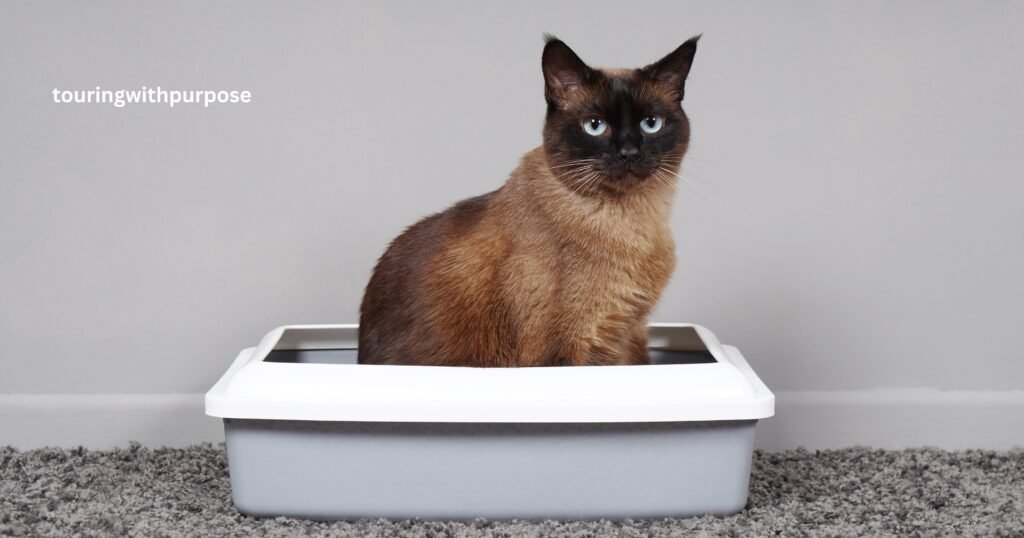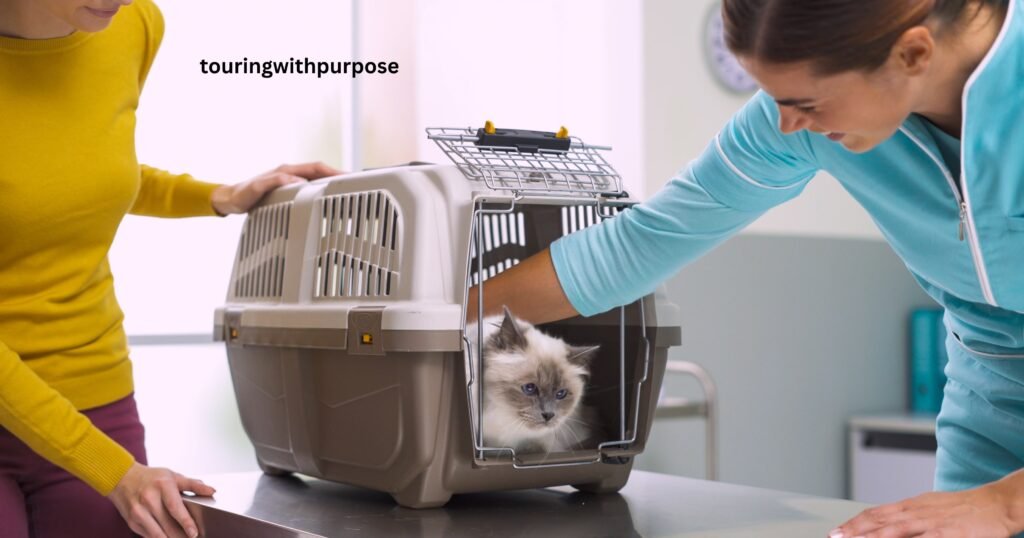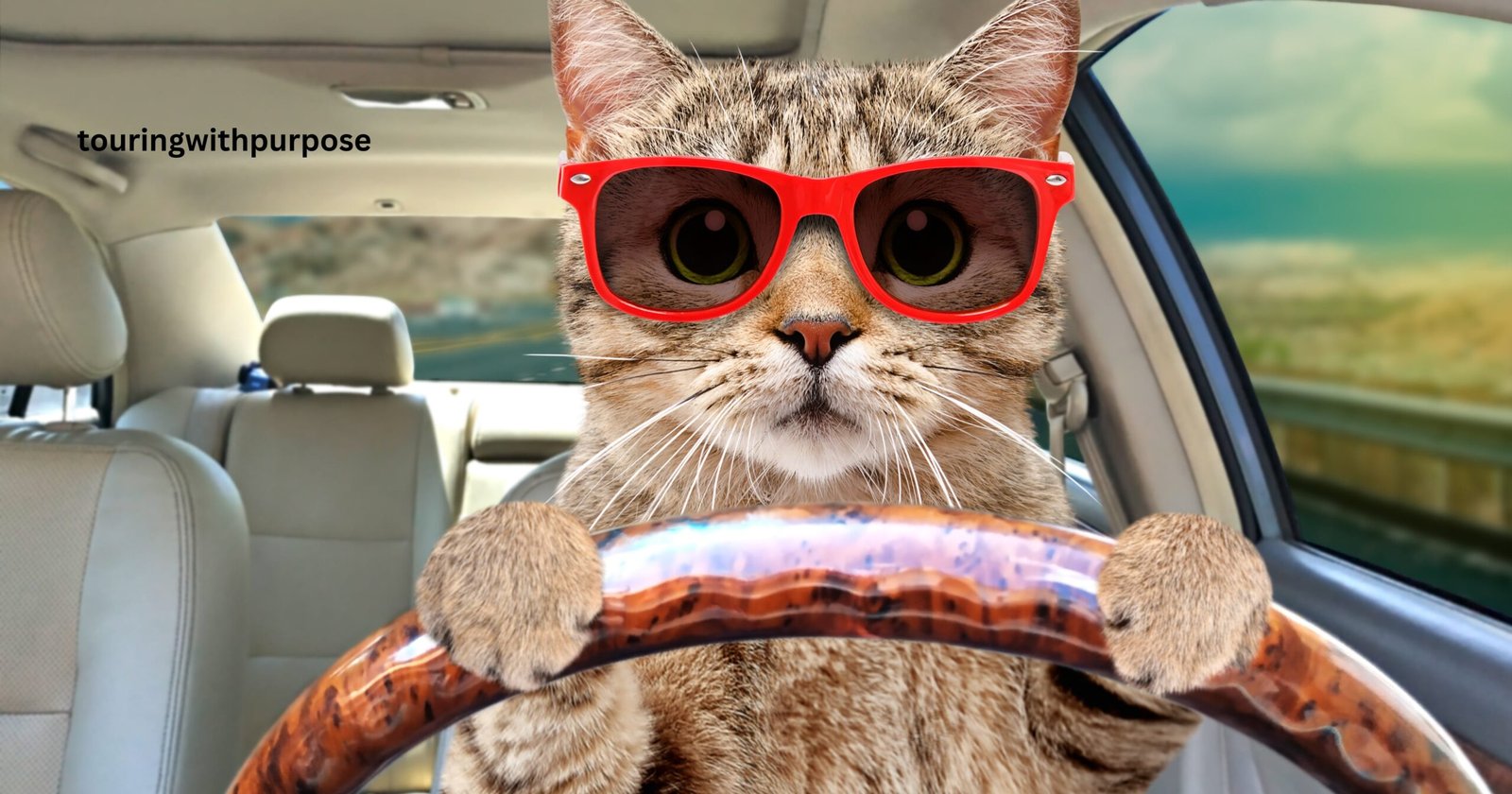If you’re getting ready to travel a long distance with your cat, ensuring they’re comfortable in their carrier is essential.
Do you think about How Long Can A Cat Travel In A Car? A cat can travel in a car with you for six hours.
You’ll still want to stop for breaks and let your cat out briefly whenever possible. Generally, healthy cats shouldn’t be in their carrier for longer than 6-8 hours.
You don’t want to go too long in the car without stopping and giving them the option to get out.
I plan to stop max every 3 hours and listen to your cat’s needs. If they’re getting restless, stop earlier for them. Give them water and food, and maybe even offer them the litter box.
Cats can travel in a car for varying durations depending on several factors, including the cat’s temperament, the purpose of the trip, and the precautions taken to ensure their comfort and safety.
Details: How Long Can A Cat Travel In A Car
Here’s a detailed overview covering common questions people might have about traveling with cats in cars:

1. Short Trips (Up to 1-2 Hours)
Cats can generally handle the journey without much stress for short car rides, such as a vet visit or a quick errand.
It’s essential to secure your cat in a carrier or crate for safety and to prevent distractions while driving.
Ensure proper ventilation in the carrier, and place familiar items like a blanket or toy inside to comfort your cat.
2. Long Road Trips (Over 2 Hours)
Cats can travel longer distances by car, but it requires more planning.
Plan rest stops every 2-3 hours to allow your cat to stretch, eat, drink, and use the litter box.
Ensure the carrier is secure and can’t shift during sudden stops or turns.
Keep the car at a comfortable temperature, avoiding extreme heat or cold.
3. Cross-Country Trips
If you embark on a cross-country road trip, you must gradually acclimate your cat to the car before the journey.
Consider staying overnight at pet-friendly hotels and allow your cat to relax in the hotel room between driving days.
Bring enough supplies for the trip, including food, water, and medications.
Keep your cat’s routine as consistent as possible to reduce stress.
4. How to Prepare Your Cat
Before the trip, get your cat used to the carrier by leaving it open at home and placing treats or toys inside.
Ensure your cat is microchipped and has proper identification.
Visit the vet for a check-up and ensure vaccinations are up to date.
Some cats may benefit from anti-anxiety medications prescribed by a veterinarian for longer journeys.
5. Signs of Stress or Discomfort
Pay close attention to your cat’s behavior during the trip. Signs of stress may include excessive meowing, pacing, panting, or hiding.
If your cat appears distressed, consider stopping and offering reassurance.
Never let your cat roam freely in the car while it’s moving; always keep them securely in a carrier.
6. Special Considerations
Cats with medical conditions or elderly cats may require extra care and shorter travel times.
If your cat has a history of car sickness, consult your vet for advice and possible medications.
7. Destination Preparation
When you arrive at your destination, create a safe and familiar space for your cat with their bed, litter box, and food.
Allow your cat time to adjust to the new environment gradually.

How Long Can A Cat Travel Without Peeing
The length of time a cat can travel without urinating can vary depending on the cat’s age, size, health, and individual habits.
However, as a general guideline:
- Kittens
Young kittens have smaller bladders and may need to urinate more frequently. They may need to urinate every 1-2 hours.
- Adult Cats
Adult cats can typically hold their urine for more extended periods. On average, they can often go without urinating for 4-6 hours, which can vary.
- Senior Cats
Older cats may have reduced bladder control and may need more frequent bathroom breaks. They might need to urinate every 3-4 hours or more frequently.
- Health and Hydration
A cat’s state of health and level of hydration can also affect how long they can go without urinating. Cats that are well-hydrated may need to urinate more frequently.
- Stress and Anxiety
Cats may be more likely to urinate when stressed or anxious, so it’s essential to consider their emotional state during travel.

Some More Tips For Traveling With A Cat In Your Car
Traveling with a cat in your car can be a manageable and safe experience with proper planning and preparation.
Here are some tips to ensure a smooth journey:
- Use a Secure Cat Carrier
- Prepare the Carrier
- Start with Short Drives
- Plan Frequent Stops
- Stay Calm and Comforting
- Bring Essential Supplies
- Temperature Control
- Avoid Free Roaming
- Practice Safety
- Plan for Accommodations
- Monitor Your Cat
- Consult Your Veterinarian

How Long Can A Cat Stay In A Carrier?
The time a cat can stay in a carrier depends on several factors, including age, temperament, and comfort level. Here are some general guidelines:
- Short Trips (1-2 Hours)
For short journeys, such as a visit to the veterinarian or a quick errand, cats can stay in a carrier for a couple of hours without significant issues. Ensure the carrier is well-ventilated and comfortable.
- Longer Trips (2-4 Hours)
Cats can typically tolerate being in a carrier for extended periods, such as 2-4 hours, as long as they have proper ventilation, comfortable bedding, and a sense of security.
- Extended Travel (4+ Hours)
For extended travel, especially road trips or flights, it’s advisable to plan regular rest stops every 2-3 hours to allow your cat to stretch, eat, drink, and use the litter box. Cats can be in the carrier during these trips but should have breaks for comfort and well-being.
- Consideration of Age and Health
Kittens and elderly cats may have more limited bladder control and need more frequent breaks. Cats with medical conditions should also be monitored closely and allowed to rest outside the carrier if needed.
- Monitoring for Stress
You must monitor your cat for signs of stress or discomfort while in the carrier. Excessive vocalization, panting, and restlessness may indicate your cat needs a break.
- Familiarity and Comfort
Make the carrier a familiar and comfortable space for your cat. Leave it open at home with their bedding, toys, and treats inside to create a positive association.
- Safety First
Always prioritize your cat’s safety when traveling. Secure the carrier in the car to prevent it from shifting during sudden stops or turns.
Cat Car Travel Accessories
When traveling with your cat in the car, having the right accessories to ensure their comfort, safety, and well-being is essential. Here’s a list of cat car travel accessories you may find helpful:
- Cat Carrier or Crate
- Travel Bedding
- Seat Belt or Carrier Restraint
- Travel Litter Box
- Disposable Litter Liners
- Cat Harness and Leash
- Food and Water Bowls
- Cat Food and Treats
- Cat Medications and Medical Records
- Blankets and Toys
- Cat Carrier Cover or Blanket
- Window Shades
- First Aid Kit:
- Waste Bags and Cleaning Supplies
- Travel Safety Kit
Conclusion
How Long Can A Cat Travel In A Car? When traveling with your cat in the car, having the right accessories ensures comfort, safety, and well-being. From a secure and well-ventilated cat carrier to portable litter boxes and travel bedding, these accessories make the trip as stress-free as possible for you and your feline companion.
Additionally, items like cat harnesses and leashes, food and water bowls, familiar blankets and toys, and even a basic first aid kit can enhance your cat’s travel experience and provide you with the tools to address any unexpected situations.
FAQs
Do I need a specific type of carrier for my cat when traveling by car?
A secure and well-ventilated cat carrier designed for travel is crucial.
Look for appropriately sized carriers for your cat and provide good airflow.
How can I make my cat comfortable during car travel?
You can make your cat more comfortable by providing familiar bedding and toys, covering the carrier with a lightweight blanket or carrier cover, and maintaining a comfortable temperature in the car.
Are there safety measures to prevent the carrier from shifting during the journey?
A seat belt or carrier restraint system is essential to secure the carrier in the car.
This prevents it from moving or tipping during sudden stops or turns.
What should I include in a cat’s travel first aid kit?
An essential cat travel first aid kit may include gauze, adhesive tape, antiseptic wipes, scissors, and specific medications your cat requires. Consult your veterinarian for personalized recommendations.
















